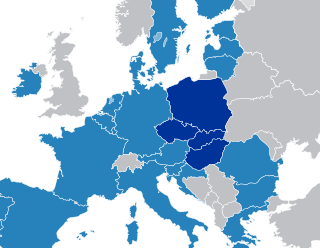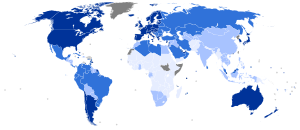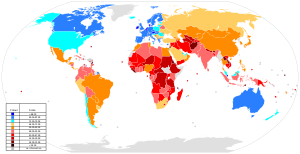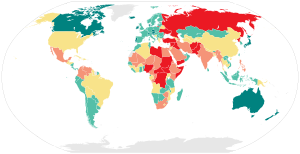
Central Europe is a geographical region of Europe between Eastern, Southern, Western and Northern Europe. Central Europe is known for its cultural diversity; however, countries in this region also share certain historical and cultural similarities.

The Visegrád Group is a cultural and political alliance of four Central European countries: the Czech Republic, Hungary, Poland, and Slovakia. The alliance aims to advance co-operation in military, economic, cultural and energy affairs, and to further their integration with the EU. All four states are also members of the European Union (EU), the North Atlantic Treaty Organization (NATO), and the Bucharest Nine (B9).
Europe, the westernmost portion of Eurasia, is often divided into regions and subregions based on geographical, cultural or historical factors. Since there is no universal agreement on Europe's regional composition, the placement of individual countries may vary based on criteria being used. For instance, the Balkans is a distinct geographical region within Europe, but individual countries may alternatively be grouped into South-eastern Europe or Southern Europe.

The European Banking Federation is a trade association representing national banking associations in countries of the European Union and the European Free Trade Association. It represents over 3,500 banks and about 2.6 million employees. It was established in 1960.
The Central European Olympiad in Informatics (CEOI) is an annual informatics competition for secondary school students. Each of the participating central European countries (plus one or two guest countries, and a local team from the host area) sends a team of up to four contestants, a team leader and a deputy team leader. The contestants compete individually, i.e. a team score is not calculated. Competitors are selected through national competitive programming contests.
AMC Networks International Central Europe is a Budapest, Hungary-based television company, owned by AMC Networks International.

Saint Nicholas is a legendary figure in European folklore based on the Greek early Christian bishop Nicholas of Myra, patron saint of children.
East-Central Europe is the region between German-, Hungarian-, and West Slavic-speaking Europe and the East Slavic countries of Belarus, Russia, and Ukraine. Those lands are described as situated "between two": "between two worlds, between two stages, between two futures".

The 21st European Athletics Junior Championships were held between 21 and 24 July 2011 in the Kadriorg Stadium in Tallinn, Estonia.
The 2011 European Junior Swimming Championships were held from 6–10 July 2011 in Belgrade, Serbia. The Championships were organized by Ligue Européenne de Natation (LEN), the European Swimming League, and were held in a 50-meter pool. Per LEN rules, competitors were aged 15 or 16 for girls and 17 or 18 for boys.
This is a list of all Slovakia national football team results against other national teams to the present day.
This article provides details of international football games played by the Israel national football team from 1990 to 2019.
The 2009 European Women Sevens Championship was the seventh edition of the European Women's Sevens Championship.
The 2011 European Women Sevens Championship was the ninth edition of the European Women's Sevens Championship.

The Lithuania national football team represents Lithuania in association football and is controlled by the Lithuanian Football Federation (LFF), the governing body of the sport in the country.

The Greece national football team results (2000–19) is a list of international matches played between 2000 and 2019.
The EuroBasket Women 2023 qualification was held from November 2021 to February 2023 to decide the 14 teams to join the co-hosts Israel and Slovenia. It featured 38 teams split in ten groups of three or four teams. The ten group winners and the four best second-ranked teams qualified for the final tournament.
This article provides details of international football matches played by the Austria national football team from 2000 to 2019.

















